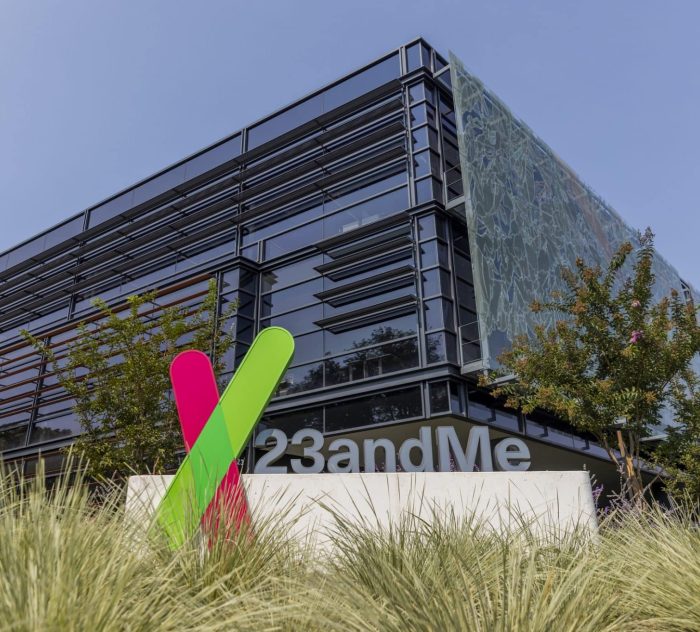Whenever a lender is making a commercial real estate loan secured by property which has been leased to one or more tenants, a lender will typically require a Subordination, Non-Disturbance and Attornment Agreement (SNDA). An SNDA is a triparty agreement between the lender, borrower (landlord) and tenant. A tenant estoppel certificate will also typically be required. Sometimes these agreements are viewed as ancillary to the primary loan documents and do not receive the attention they deserve, often being addressed “post-close”, if at all. Depending on the nature of the property and the terms of the leases, the SNDAs and estoppel certificates should be one of the first items of business addressed by the lender and the landlord, and sending the proposed forms to the required tenants should be done well in advance of a target closing date.
Which Tenants Should Lender Require to Sign Estoppels and SNDAs
From a practical perspective, the initial determination a lender should make is who needs to sign an estoppel and SNDA. If the collateral will be a multi-tenant building, such as a shopping center or office building, obtaining estoppels and SNDAs from all tenants will be time-consuming and probably unrealistic, so the lender will need to determine, from an underwriting standpoint, which tenants will need to sign an SNDA and estoppel certificate. It is not unusual, in the interest of closing a transaction on a timely basis, for a lender to not require an SNDA (and possibly an estoppel certificate) from tenants occupying space below a minimum square foot threshold and who have not recorded a memo of lease. It is also not unusual for a lender to agree that an SNDA can be delivered post-closing, however the lender needs to be aware that it loses any negotiating leverage it might have after a closing. Lender’s counsel should be consulted to advise on the risks to the lender of not obtaining SNDAs from certain tenants based on the terms of their leases.
Core Components of an SNDA
1. Subordination: A lease executed prior to a deed of trust is generally senior to the deed of trust, particularly if there is a recorded memo of lease, unless the lease itself provides that it will be subordinate to any future deed of trust, and if a foreclosure occurs, the buyer may take title to the collateral subject to the terms of the senior lease. In an SNDA, the tenant is agreeing to subordinate its rights under its lease to the lender’s deed of trust, which helps to preserve the lender’s control over its collateral.
2. Non-Disturbance: Typically, a tenant will not agree to subordinate its lease to a deed of trust unless the lender agrees that, so long as the tenant is in compliance with the lease, the tenant’s occupancy, use and enjoyment of its premises will not be disturbed or terminated in the event of a foreclosure. The non-disturbance language in an SNDA gives the tenant the right to continue to occupy the premises under the terms of the lease as long as no default under the lease has occurred, and confirms the tenant will not be named in a foreclosure action, unless required to be named under applicable law.
If the property is leased by the landlord to a related party, the lender should consider requiring a subordination of lease only (i.e. no non-disturbance), since the lender will not want to be contractually bound to deal with a tenant affiliated with its borrower after a foreclosure.
3. Attornment: If the lender agrees that the tenant’s occupancy, use and enjoyment of its premises will not be disturbed after a foreclosure, the lender will also want to make sure that in the event the lender becomes the owner of the property that the tenant will recognize the lender as the landlord under the lease. The attornment language in the SNDA is the tenant’s agreement that in the event of foreclosure it will recognize the lender (or other purchaser) as the new landlord and will continue to comply with the terms of the lease and will pay rent to the lender as the new landlord.
Typical Additional Lender-Friendly Terms in an SNDA
Even if a lease contains a provision that automatically subordinates the lease to a future deed of trust, a lender should typically still require an SNDA since the SNDA will provide the lender with additional protections and rights. Examples of some of the additional terms a lender would want included in an SNDA are:
- a limitation of the lender’s liability to the tenant related to previous acts or omissions of the landlord prior to the lender taking title to the property and a waiver of any tenant offset rights related to such preexisting landlord acts or omissions;
- a requirement that the tenant provide the lender with notice of a landlord default under the lease, and an optional cure right;
- confirmation of the lender’s priority claim to insurance and condemnation proceeds;
- indemnities by the tenant in favor of the landlord for environmental matters and other actions of the tenant;
- acknowledgement by the tenant that the lender is not obligated to complete unfinished landlord construction work or to pay tenant any portion of a tenant allowance that may still be owed at the time the lender takes title to the property; and
- restrictions on substantive lease amendments or a lease termination.
There are quite a few additional terms similar to those above that are generally favorable to the lender which are commonly included in an SNDA which don’t necessarily relate to the core components of an SNDA, but often address the most important issues which potentially will impact the relationship between the tenant and lender if the lender ever becomes the owner of the property. For this reason, these additional terms are often the most heavily negotiated and contentious points in an SNDA.
Tenant Estoppel Certificate
In addition to an SNDA, the lender will want each tenant to sign a certification verifying certain factual statements related to the status of the lease. In the estoppel certificate, the tenant will make representations and warranties as to the following items (among others): lease commencement date, the current rental rate, the expiration date of the term and the number of remaining renewal options, unpaid tenant allowances, rights of first refusal or first offer, the nonexistence of a default under the lease, or if a default exists, details related to the nature of the default, and the date through which rent has been paid.
Conclusion
SNDAs and estoppels are essential for a lender to maximize its collateral value in any real estate loan secured by leased property, and should not be overlooked. If you need any assistance in understanding or negotiating the terms of an SNDA or estoppel, please contact the Financial Services attorneys at Poyner Spruill LLP.



